Detailed explanation of Java multithreading basics
1. Thread status
2. Creating and using multi-threads
3. Thread synchronization
4. Synchronization collection
Thread status
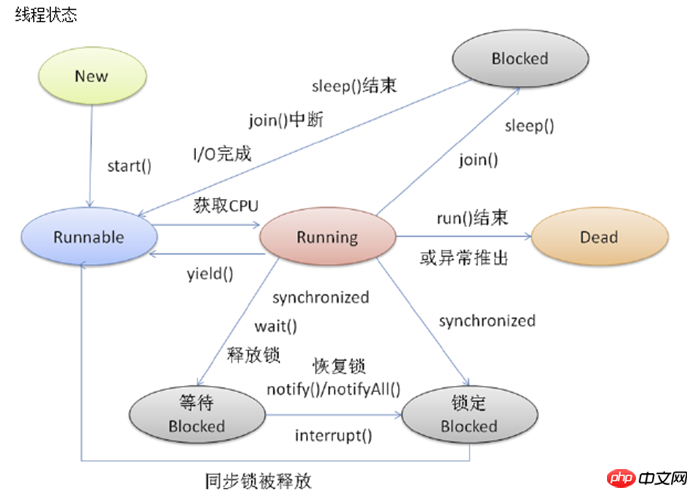
Threads have five states: new, ready, running, blocked or ended.
New: Create a new thread, and the thread enters the new state;
Ready: After calling the thread's start() method to start the thread, it enters the ready state;
Run: When you get CPU time, the thread enters the running state from the ready state. If the time slice expires or the yield() method is called, the running state thread may enter the ready state;
Blocking: call join(), sleep(), or wait () method, or waiting for the I/O to end, the thread is in a blocked state;
Complete: When the thread finishes executing the run() method, the thread ends.
Creating and using multi-threads
Thread’s class diagram
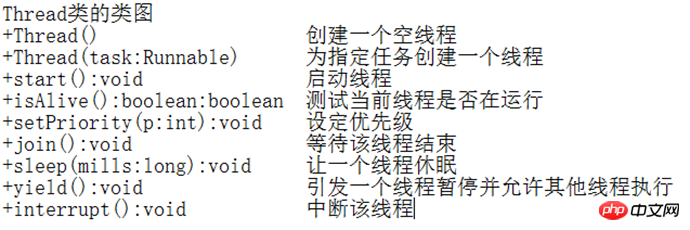
1. Inherit the Thread class to create a new thread
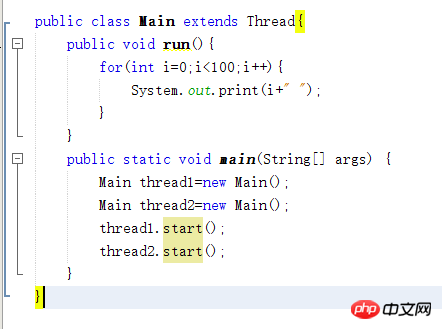
2. Implement the Runnable interface and rewrite run( ) method
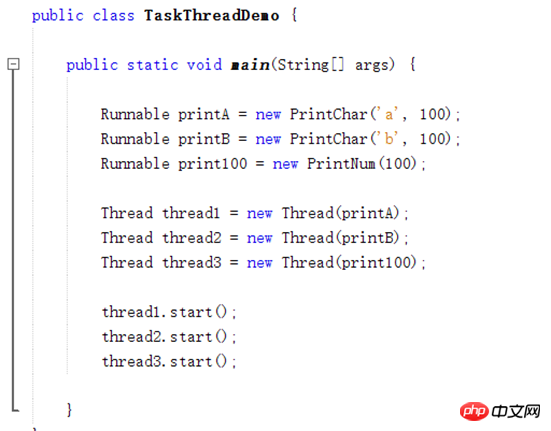
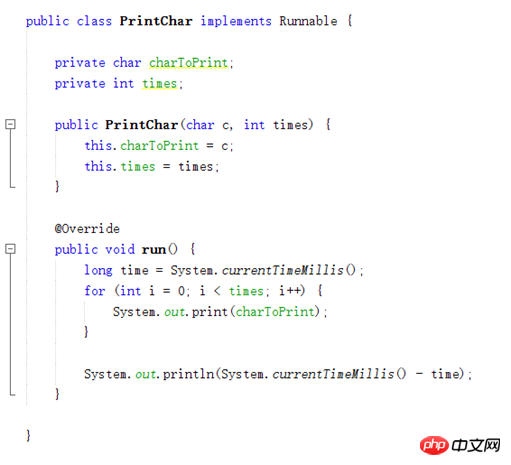
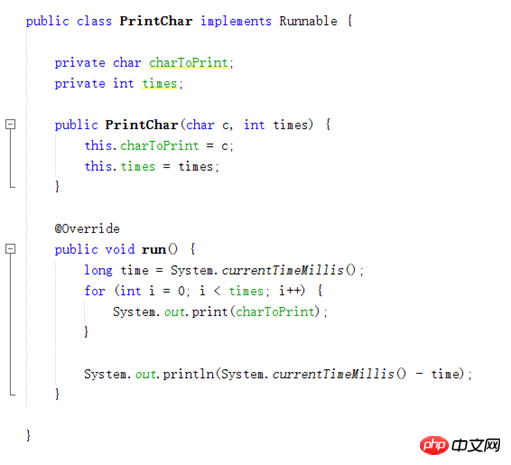


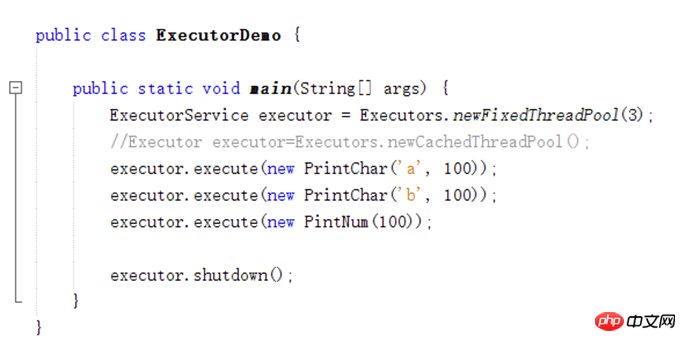
#Thread synchronization If a shared resource is accessed by multiple threads at the same time, it may be damaged. For example, if the data fields are modified in different orders, the final value may be uncertain.
Competition state: If two or more tasks access a common resource in a way that will cause conflicts, it is called a competition state
To avoid a competition state, multiple threads should be prevented At the same time, enter a specific part of the program. This part of the program is called a critical section.
1. Using lock synchronization
Java can explicitly use locks and states to synchronize threads. A lock is an instance of the Lock interface, which defines methods for locking and releasing locks.
RenntrantLock is an implementation of Lock, used to create mutually exclusive locks. Locks can be created for specific fairness policies. A fair policy value of 1 is true, ensuring that the thread with the longest waiting time acquires the lock first. If false, it is given to any waiting thread.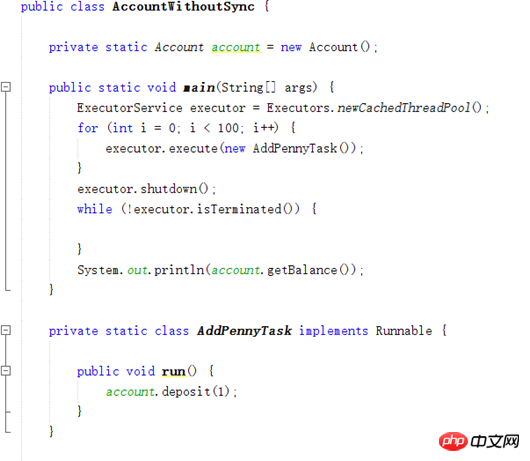
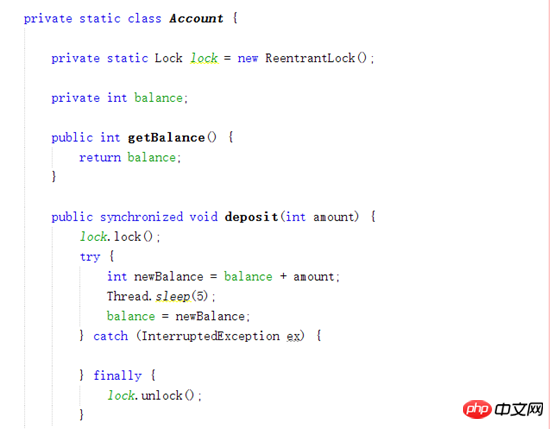 2. Thread collaboration
2. Thread collaboration
Objects created by calling the newCondition() method of the Lock object can be used await(), signal() and signalAll() methods to achieve mutual communication between threads.
When a thread calls the await() method, the thread enters the waiting state, waiting for the wake-up signal.
3. Blocking queue
can block the current thread. If a thread takes elements from an empty blocking queue, the thread will be blocked until there are elements in the queue. The blocked queue will be automatically awakened, which provides great convenience.
Several blocking queues:
1: ArrayBlockingQueue uses an array to implement a blocking queue, and a capacity or optional fairness strategy must be specified to construct2: LinkedBlockingQueue uses a linked list to implement a blocking queue. Can be created unbounded or bounded.
3: PriorityBlockQueue priority queue, sorts elements according to their priority.
ArrayBlockingQueue data field
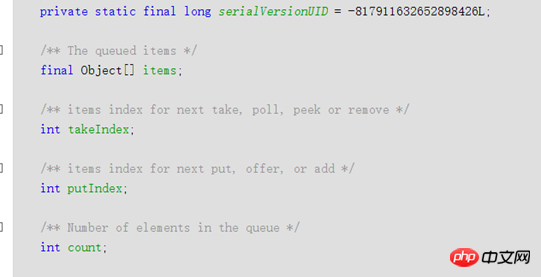
##It can be seen that the storage space is an array, and a lock is used. 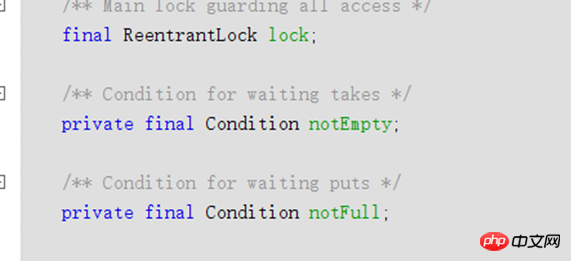
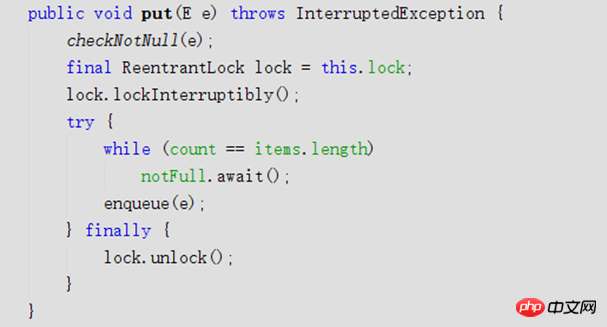
Wait when the queue is full, and enter the queue when it is not full. At this time, use lock synchronization

Queue Wait when empty and leave the queue when not.
Blocking Queue Application


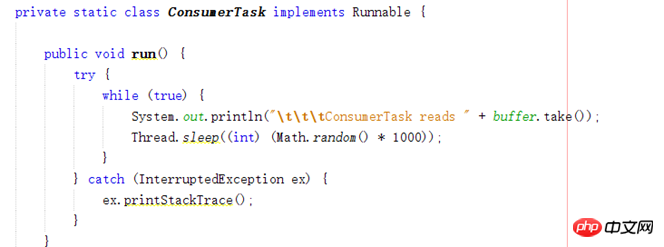
By As can be seen from the example, the producer puts numbers into the queue, the consumer takes the numbers from the queue, and waits when the queue is empty. Synchronization has been implemented in the queue without using locks and conditions.
3. Semaphores
Semaphores refer to objects that access common resources. Before accessing a resource, a thread must obtain permission from the semaphore. After accessing the resource, the permission must be returned to the semaphore.
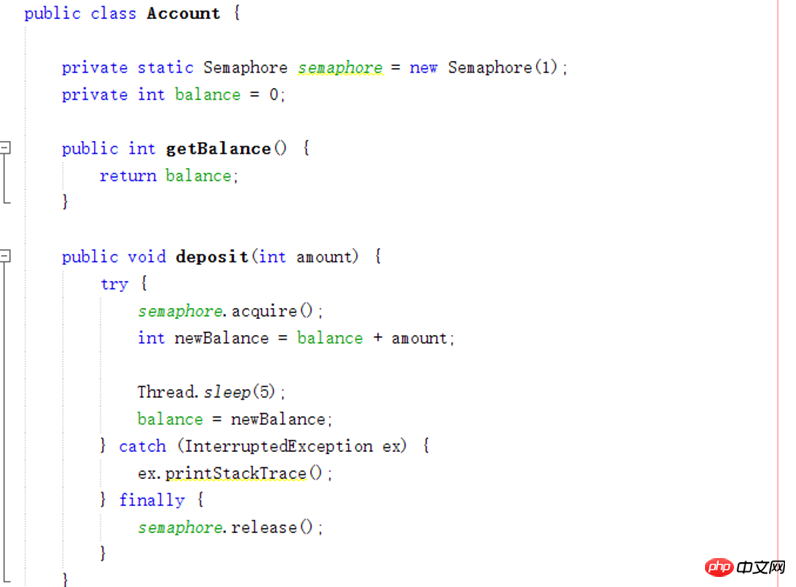
The program creates a semaphore with a permission. When a thread is granted permission, other threads cannot access the resource until the previous thread releases the permission.
Synchronized Collections
Classes in the Java Collections framework are not thread-safe; that is, if they are accessed by multiple threads at the same time and Update, their contents may be corrupted, the data in the collection can be protected by locking the collection or synchronizing the collection

Related articles:
Java Implementation of get, PUT, POST, delete requests
Detailed introduction to Java programming common problems summary
Diagram of Java remote communication technology and principle analysis Text introduction
The above is the detailed content of Detailed explanation of Java multithreading basics. For more information, please follow other related articles on the PHP Chinese website!

Hot AI Tools

Undresser.AI Undress
AI-powered app for creating realistic nude photos

AI Clothes Remover
Online AI tool for removing clothes from photos.

Undress AI Tool
Undress images for free

Clothoff.io
AI clothes remover

Video Face Swap
Swap faces in any video effortlessly with our completely free AI face swap tool!

Hot Article

Hot Tools

Notepad++7.3.1
Easy-to-use and free code editor

SublimeText3 Chinese version
Chinese version, very easy to use

Zend Studio 13.0.1
Powerful PHP integrated development environment

Dreamweaver CS6
Visual web development tools

SublimeText3 Mac version
God-level code editing software (SublimeText3)

Hot Topics
 1655
1655
 14
14
 1413
1413
 52
52
 1306
1306
 25
25
 1252
1252
 29
29
 1226
1226
 24
24
 Break or return from Java 8 stream forEach?
Feb 07, 2025 pm 12:09 PM
Break or return from Java 8 stream forEach?
Feb 07, 2025 pm 12:09 PM
Java 8 introduces the Stream API, providing a powerful and expressive way to process data collections. However, a common question when using Stream is: How to break or return from a forEach operation? Traditional loops allow for early interruption or return, but Stream's forEach method does not directly support this method. This article will explain the reasons and explore alternative methods for implementing premature termination in Stream processing systems. Further reading: Java Stream API improvements Understand Stream forEach The forEach method is a terminal operation that performs one operation on each element in the Stream. Its design intention is
 PHP: A Key Language for Web Development
Apr 13, 2025 am 12:08 AM
PHP: A Key Language for Web Development
Apr 13, 2025 am 12:08 AM
PHP is a scripting language widely used on the server side, especially suitable for web development. 1.PHP can embed HTML, process HTTP requests and responses, and supports a variety of databases. 2.PHP is used to generate dynamic web content, process form data, access databases, etc., with strong community support and open source resources. 3. PHP is an interpreted language, and the execution process includes lexical analysis, grammatical analysis, compilation and execution. 4.PHP can be combined with MySQL for advanced applications such as user registration systems. 5. When debugging PHP, you can use functions such as error_reporting() and var_dump(). 6. Optimize PHP code to use caching mechanisms, optimize database queries and use built-in functions. 7
 PHP vs. Python: Understanding the Differences
Apr 11, 2025 am 12:15 AM
PHP vs. Python: Understanding the Differences
Apr 11, 2025 am 12:15 AM
PHP and Python each have their own advantages, and the choice should be based on project requirements. 1.PHP is suitable for web development, with simple syntax and high execution efficiency. 2. Python is suitable for data science and machine learning, with concise syntax and rich libraries.
 PHP vs. Other Languages: A Comparison
Apr 13, 2025 am 12:19 AM
PHP vs. Other Languages: A Comparison
Apr 13, 2025 am 12:19 AM
PHP is suitable for web development, especially in rapid development and processing dynamic content, but is not good at data science and enterprise-level applications. Compared with Python, PHP has more advantages in web development, but is not as good as Python in the field of data science; compared with Java, PHP performs worse in enterprise-level applications, but is more flexible in web development; compared with JavaScript, PHP is more concise in back-end development, but is not as good as JavaScript in front-end development.
 PHP vs. Python: Core Features and Functionality
Apr 13, 2025 am 12:16 AM
PHP vs. Python: Core Features and Functionality
Apr 13, 2025 am 12:16 AM
PHP and Python each have their own advantages and are suitable for different scenarios. 1.PHP is suitable for web development and provides built-in web servers and rich function libraries. 2. Python is suitable for data science and machine learning, with concise syntax and a powerful standard library. When choosing, it should be decided based on project requirements.
 Java Program to Find the Volume of Capsule
Feb 07, 2025 am 11:37 AM
Java Program to Find the Volume of Capsule
Feb 07, 2025 am 11:37 AM
Capsules are three-dimensional geometric figures, composed of a cylinder and a hemisphere at both ends. The volume of the capsule can be calculated by adding the volume of the cylinder and the volume of the hemisphere at both ends. This tutorial will discuss how to calculate the volume of a given capsule in Java using different methods. Capsule volume formula The formula for capsule volume is as follows: Capsule volume = Cylindrical volume Volume Two hemisphere volume in, r: The radius of the hemisphere. h: The height of the cylinder (excluding the hemisphere). Example 1 enter Radius = 5 units Height = 10 units Output Volume = 1570.8 cubic units explain Calculate volume using formula: Volume = π × r2 × h (4
 PHP's Impact: Web Development and Beyond
Apr 18, 2025 am 12:10 AM
PHP's Impact: Web Development and Beyond
Apr 18, 2025 am 12:10 AM
PHPhassignificantlyimpactedwebdevelopmentandextendsbeyondit.1)ItpowersmajorplatformslikeWordPressandexcelsindatabaseinteractions.2)PHP'sadaptabilityallowsittoscaleforlargeapplicationsusingframeworkslikeLaravel.3)Beyondweb,PHPisusedincommand-linescrip
 PHP: The Foundation of Many Websites
Apr 13, 2025 am 12:07 AM
PHP: The Foundation of Many Websites
Apr 13, 2025 am 12:07 AM
The reasons why PHP is the preferred technology stack for many websites include its ease of use, strong community support, and widespread use. 1) Easy to learn and use, suitable for beginners. 2) Have a huge developer community and rich resources. 3) Widely used in WordPress, Drupal and other platforms. 4) Integrate tightly with web servers to simplify development deployment.




